indians of the WEST
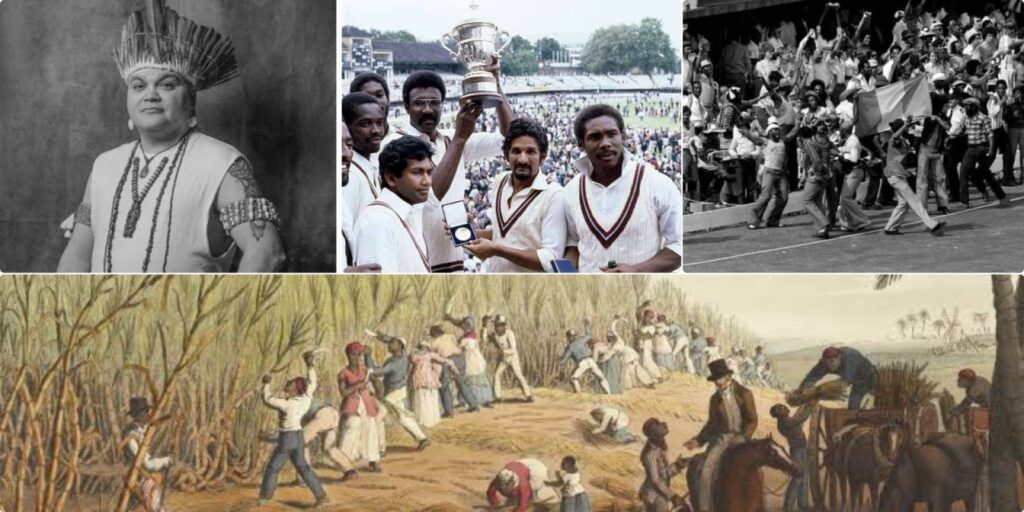
Various European explorers were in a hunt to find India at the start of the 14th century. Italian explorer Christopher Columbus was one of them who was in search for a direct sea route to India. But by mistake he discovered America. He made four voyages, but always stumbled up into the American Island. Caribbean island was one of the places he mistakenly discovered. Upon finding these Islands in 1492 he presumed that he had found India. This misconception went on for fourteen long years. In the early part of finding the Caribbean Island, it was called India then. Because Columbus thought that he had found India.
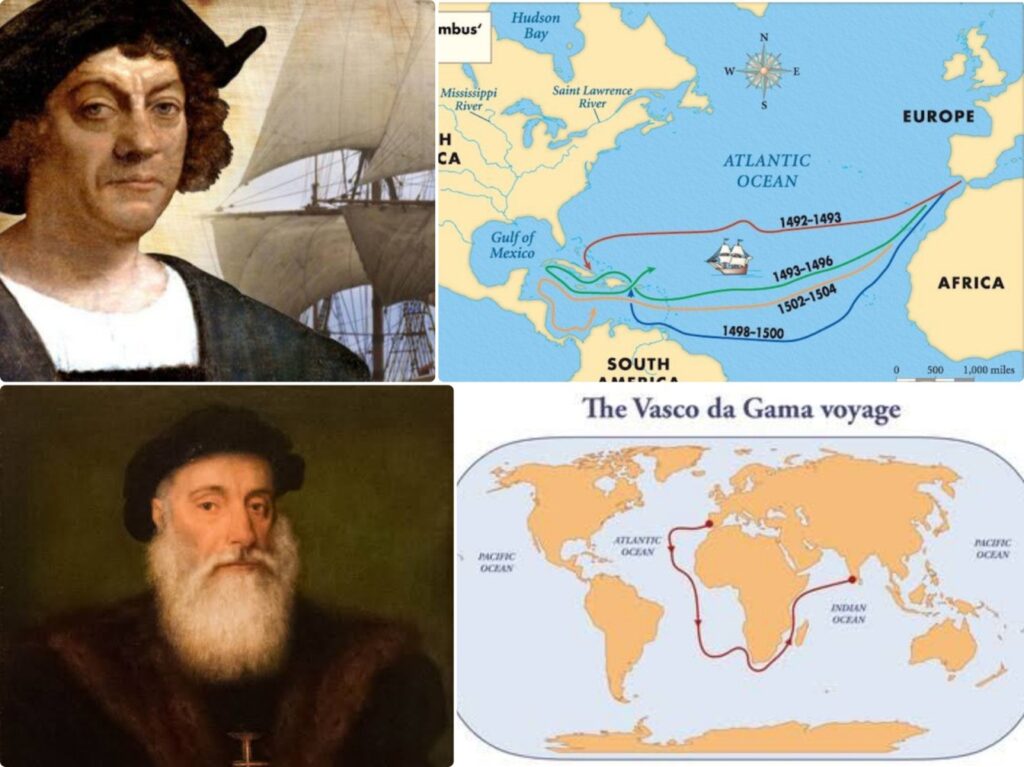
Down: Vasco da Gama’s route to find India
But In July 1497 Portuguese explorer Vasco de Gama became the first European to find a route to India via the Atlantic Ocean. He landed at the Malabar Coast, Kerela.
For many years both the parts were called the Indies. Later to negate confusion India was called the East India and the Caribbean Island was called the West Indies.
Indigenous People
Ethinic groups like Arawaks and the Caribs are believed to be the early indigenous people of the Caribbean islands. The most popular theory is that the name Caribbean was derived from Carib people itself.
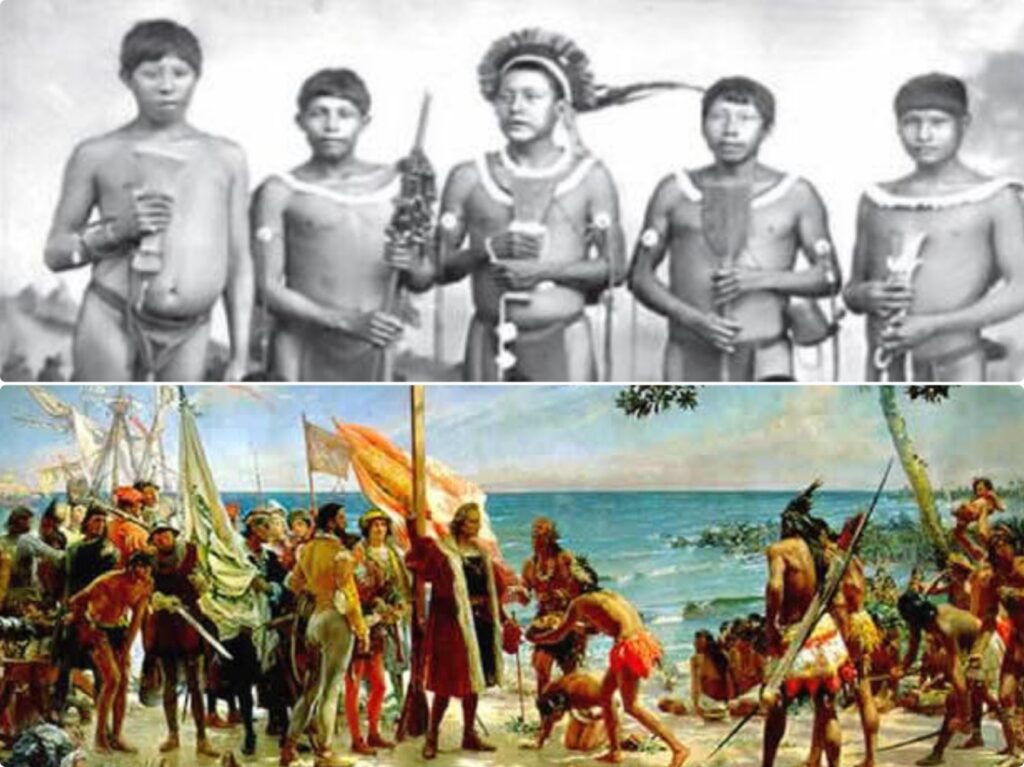
Down: Picture depicting the first contact of the Tanio’s with the Europeans
But at the time of the first contact with the Europeans the Taino tribe were the main inhabitants of that region. Taino’s people’s origin could be traced to South America.
Conflicts took place between the European forces and the local ethinic groups. These ethinic people were enslaved and massacred by the European forces. Diseases like smallpox also played its part. These ethnic groups were not immune to these diseases. Hence this reduced their population even further. Christopher Columbus kept on believing that this region is infact India and soon he will find rich valuable goods which he had read and heard.
Europeans Arrival
Spain, England, Dutch, and France were the major Colonial powers in the Caribbean islands since the 1500’s. Spain was first to arrive in that region in search of wealth such as Gold and Silver, but they were not so successful. But the region was warm enough for cultivation, hence they saw an opportunity in farming and stayed there. England, France and some other European countries also followed up. Farming was becoming a profitable business but the region lacked manpower. To meet the demand the europeans bought African people as a slave from the African continent.
Atlantic Slave Trade
In the coming years around 12 million were brought to the American continent. Five million were brought to the Caribbean Island. Their purpose was to make these labour work in the various plantations such as sugar, tobacco and cotton. This helped the Europeans meet the demand of their basic needs and establish their colonies across the region. Initially the major importer of these labourers to the American continent were the Dutch. As the British started to gain more uphold on the region in 1600’s, they became the major importer of these labourers.
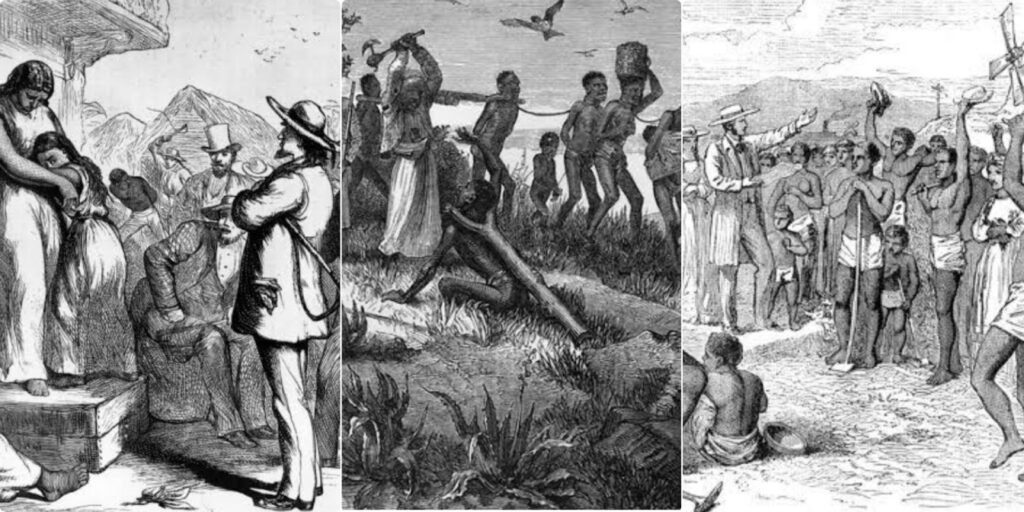
Between 1662 and 1807 Britain shipped around 3 million Africans to the Caribbean British Colonies. They were forcibly slaved and made to work in various plantations for the British owned colonies. Jamaica and Barbados had the most number of African slaves.
Portugal and the Netherlands profited a lot from the labour trade. But the maximum beneficiary was Britain who made a national fortune from it.
The slave business had a negative impact on indigenous caribbeans. The natives were wiped out by the diseases Europeans brought. The indigenous population were lessening considerably compared to the Africans and Europeans. Those indigenous who survived got mixed with African and Europeans which resulted in a mixed breed. Today only 10% population of the Caribbean population is identified as indigenous people.
Independence of Caribbean islands
Haiti became the first island to attain independence from colonial rule in 1804. This was followed by the Dominican Republic gaining its freedom in 1844 and Cuba in 1902.
Jamaica also got its independence in 1962. The same year “Trinidad and Tobago” also achieved its freedom. Other British occupied islands like Barbados, Bahamas, Grenada, Dominica attained their independence in 1966, 1973, 1974, 1978 respectively.
Cyril Lionel Robert James of Trinidad, Paul Bogle and Queen Nanny of Jamaica, Che Guevara of Cuba are some revolutionary figures of the Caribbean who fought for the independence of their respective territories.
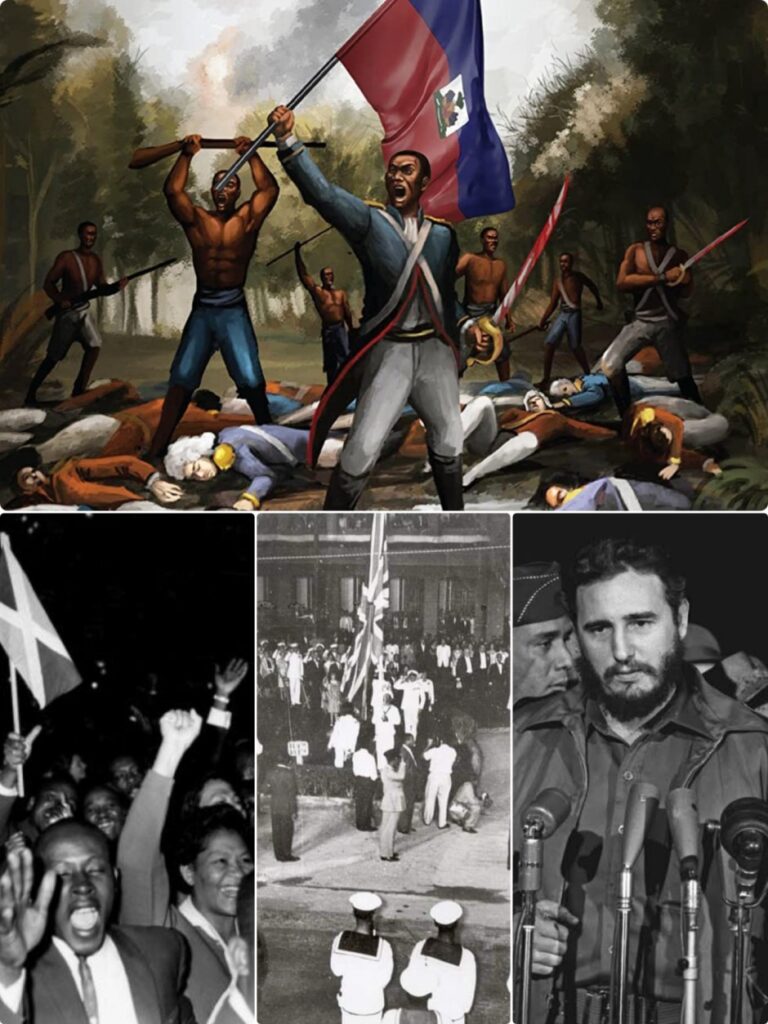
The Caribbean has been shaped by their people. There were many events which are specially marked in Caribbean history, like:
- The 1791 Haitian Revolution.
- 1938 Asain Migration to the caribbean.
- 1848 slavery abolishment in all French territories
- Netherlands ending slavery in all its territories in 1863.
- US military occupation of Dominica republic in 1915.
- US military occupation of Haiti in 1916.
- Fidel Castro taking power of Cuba in 1959.
Federation of West Indies
But one incident which is not talked about much is the story of “Federation of West Indies”. The “Federation of West Indies” was created in 1958 which comprised ten territories. These territories included Barbados, Antigua and Barbuda, Trinidad and Tobago, Jamaica, Dominica, Grenada, Montserrat, Saint Kitts and Nevis, Saint Lucia, St Vincent.
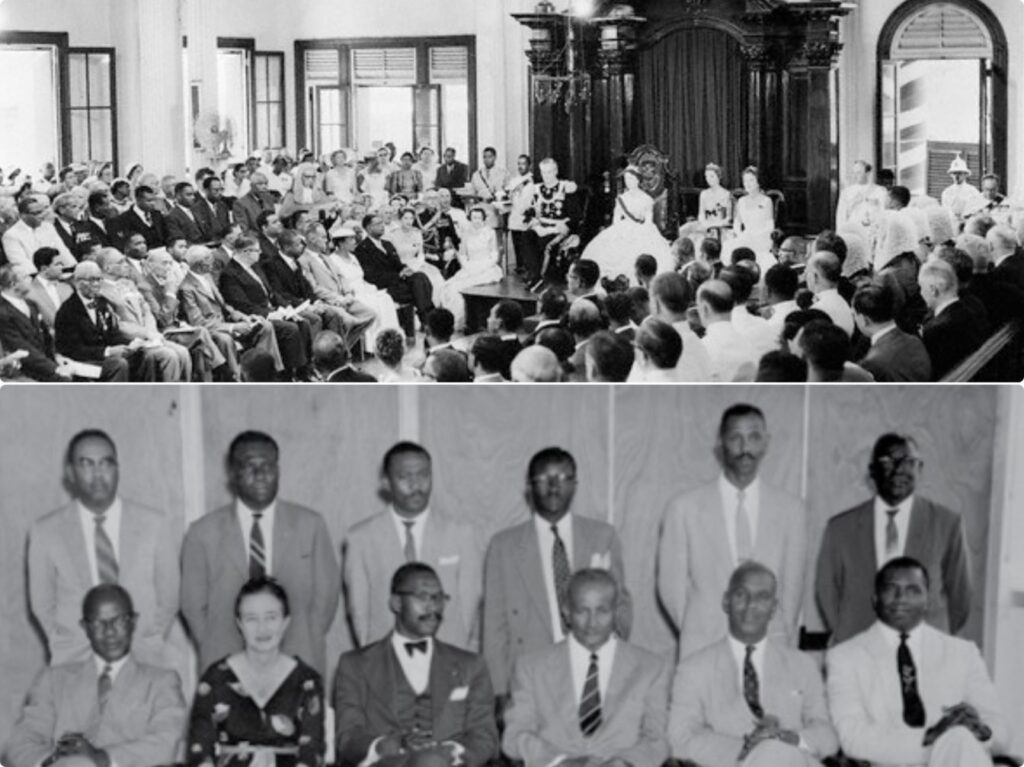
Down: Members of the Federation of West Indies
The Federation’s purpose was to create a single unified independent state for all the Caribbean islands which would be independent from Britain. But due to internal politics, Jamaica broke away from the federation. Soon Trinidad and Tobago also followed suit. Before the federation could stand on its own feet it was dissolved in May 1962. The dream of creating a united Caribbean was over.
But a game called cricket united different Caribbean islands together. The people of that island had different culture, different food habits and different political structure. But for the game of cricket all united and played the game under one flag. Internationally they represented themselves as the West Indies.
Caribbean Cricket Story
The game of cricket got familiarised in the Caribbean because of its colonial rule. The first West Indies cricket team was formed in the 1880s. That team toured Canada and the United States. Cricket was then still a white man’s game, hence very few black cricketers represented the West Indies. But in the coming years black cricketers also started to take up the game.
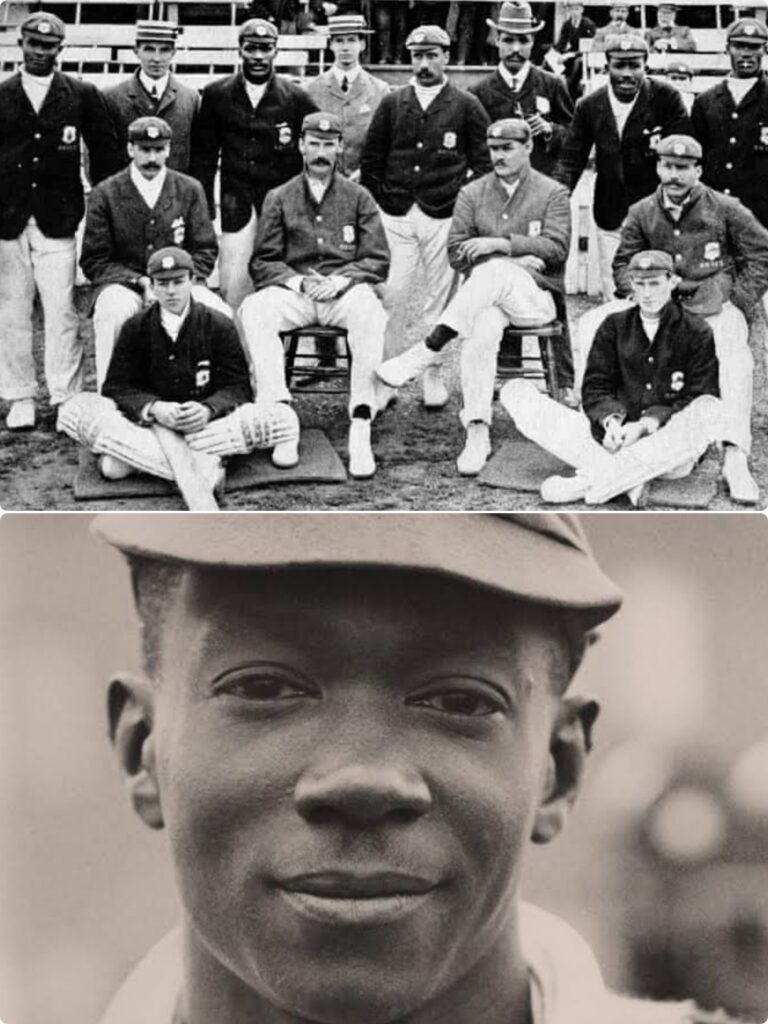
The first black cricketer to become famous was George Alphonso Headley. He had an excellent test batting average of 60.83. For his exponential talent he was also termed as the black Bradman. He even captained a test match and became the first black cricketer to captain the West Indies team.
Humiliations
In 1960 Frank Worell became the first black cricketer for the West Indies to captain an entire series. West had some great cricketers in the 60s, 70s era, like Frank Worell himself, Gary Sobers, Rohan Kanhai and Wesley hall.
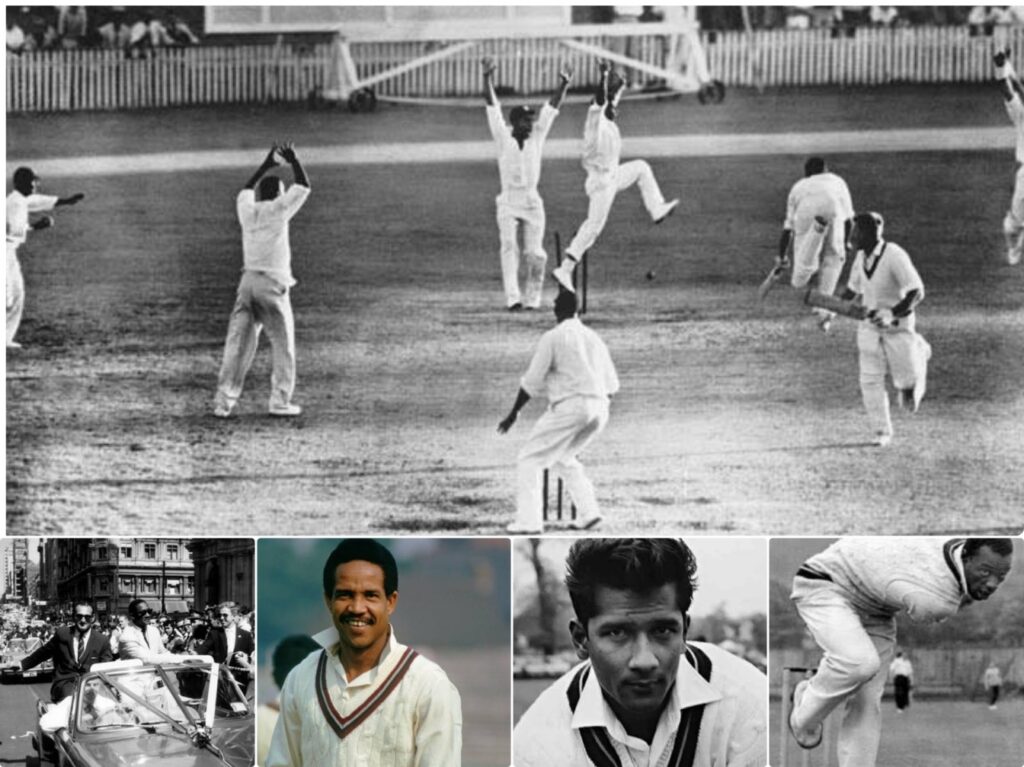
In that era Individual brilliance was always there, but collective team effort was very inconsistent. West Indian cricketers were referred to as a mere entertainer who would show some spark of brilliance but would eventually lose.
In one of the tours to Australia in 1960 – 61 the west Indies team lost the five test series 2-1. In this series the famous Birsbane’s tied test match was played. Before the departure from Australia, the West Indies cricketers were driven in an open-top car through the streets of Melbourne where fans came up in huge numbers to see them off. This particular incident was not taken well by some in the Caribbean. Because it proved the theory correct that West Indies cricketers were mere entertainers, not winners. West Indies had lost the series and the parade like event felt like an insult to many.
That was also the time when many Caribbean regions got their independence from the colonial regime.
Further Losses
In another major humiliation West Indies lost a five match home test series to India 1-0. The West Indies were looking for someone who would bring some pride to the team. They found Guyana’s Clive Lyod as an ideal leader.
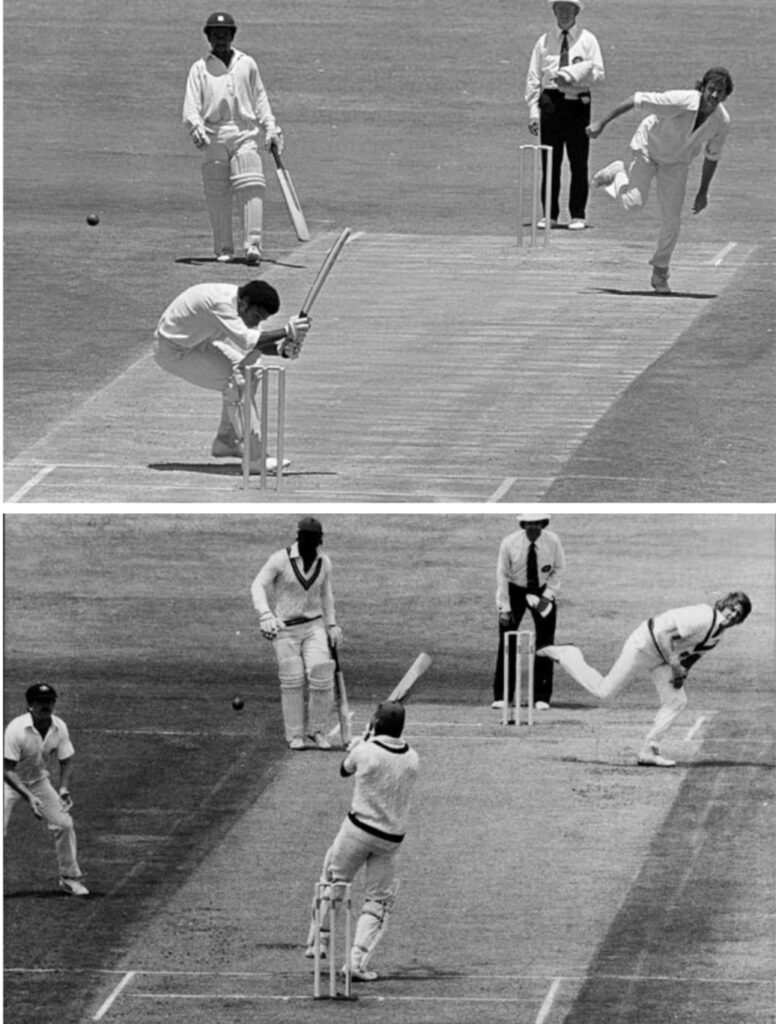
Down: Jeff Thompson in action
West Indies had beaten the Australians in the first ever cricket World Cup in 1975. They were hoping to replicate the similar success in the test matches also. Once again West Indies toured Australia in 1975 with a young team with a hope of bringing glory. But the experienced Australian team was too strong for the West Indies. West Indies couldn’t handle the rapid pace of Dennis Lellie and Jeff Thompson. West Indies were humiliated and lost the six match test series 5-1. Along with the defeat, the West Indies were also racially abused by the hostile Australian crowd. They were constantly reminded of their African heritage and were racially foul mouthed.
Black Pride
Back home bruised and deflated the team was looking for self respect. The West Indies under Clive Lloyd rebuilt the team and introduced some quick fast bowlers. They won the 1976 home test series against India 2-1.
Their next tour was in England. The Caribbean were once under the British regime. A lot of history was already there between the two countries. Lots of hype was around that test series.
England’s captain Tony Greg made a very controversial statement where he racially attacked the West Indies cricket team. He wanted to make them “Grovel”. Like many white people Tony Greg was also full of the feeling of White supremacy. That particular statement fired up the West Indies team and they got extra motivated.
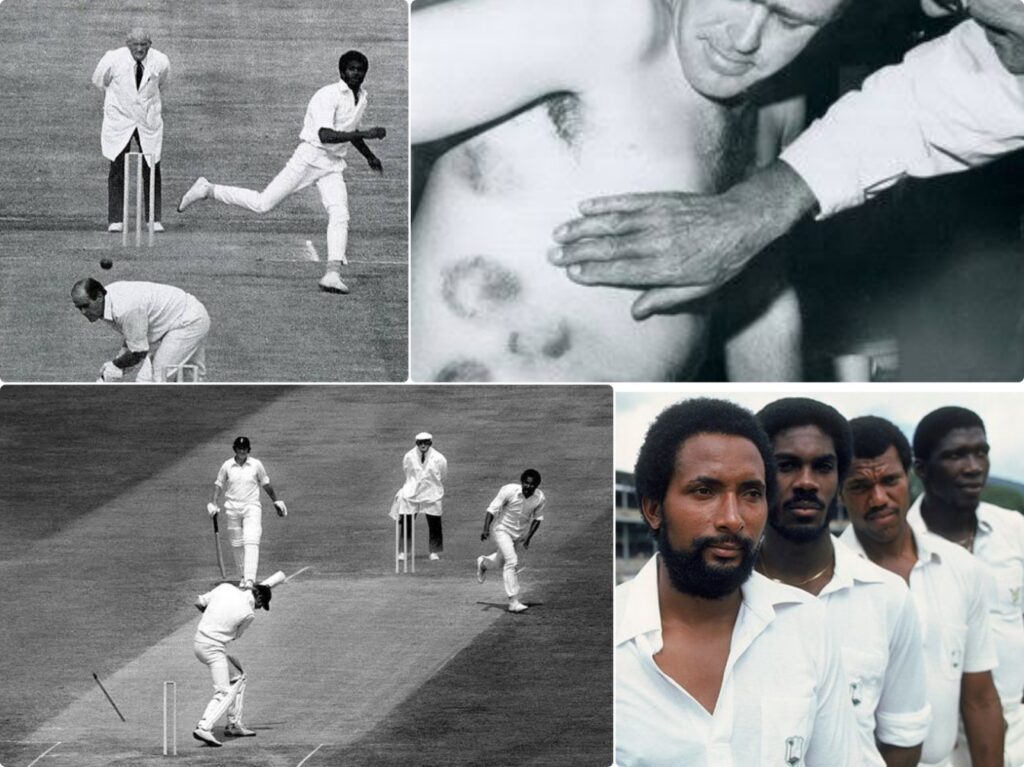
The West Indies team performed exponentially well, beating the English team 3-0. It’s not just an ordinary win, but the manner in which they won was commendable. The fast men of the West Indies were too strong for the English. England were hammered with bouncers from the West Indians fast bowlers. They were bruised and English pride was hurt. It seemed that West Indies cricketers were not playing cricket but were fighting against the oppression they have been facing since ages. All their anger against the past injustice reflected on the cricket field.
Uniting Region’s
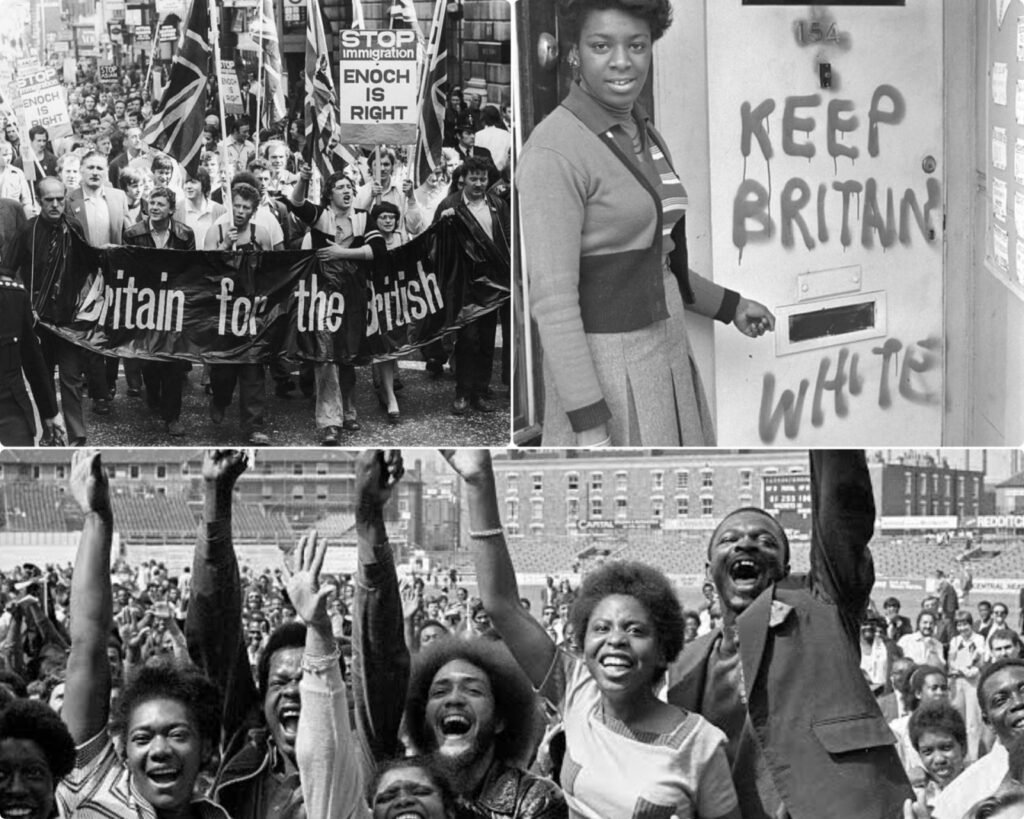
Many Caribbeans immigrants used to live in England and were also subjected to racism in their daily lives. Those immigrants came in huge numbers to support the West Indies team. This team brought a sense of pride in them, the pride of being a West Indian. They were not a Jamaican, or a Trinadadian or a Barbadian, all were proud West Indians. What the politicians couldn’t do a group of cricketers did. They united different islands of the Caribbean. Officially the concept of West Indies never materialised but emotionally Caribbean people got united through West Indies cricket.
Cultural Significance
From there the West Indies team started their world domination. They performed exceedingly well by winning two ODI world cups, 16 consecutive test wins and many other matches. The success of the West Indian cricketers brought some kind of cultural change in the island. Also, that generation wanted to restore their dignity which was taken away from them.
Cricket was the only activity which the people of the Caribbean undertook together on the international stage. That particular Caribbean era was also experiencing a cultural change. The emergence of new ideas, new identities, and new music.
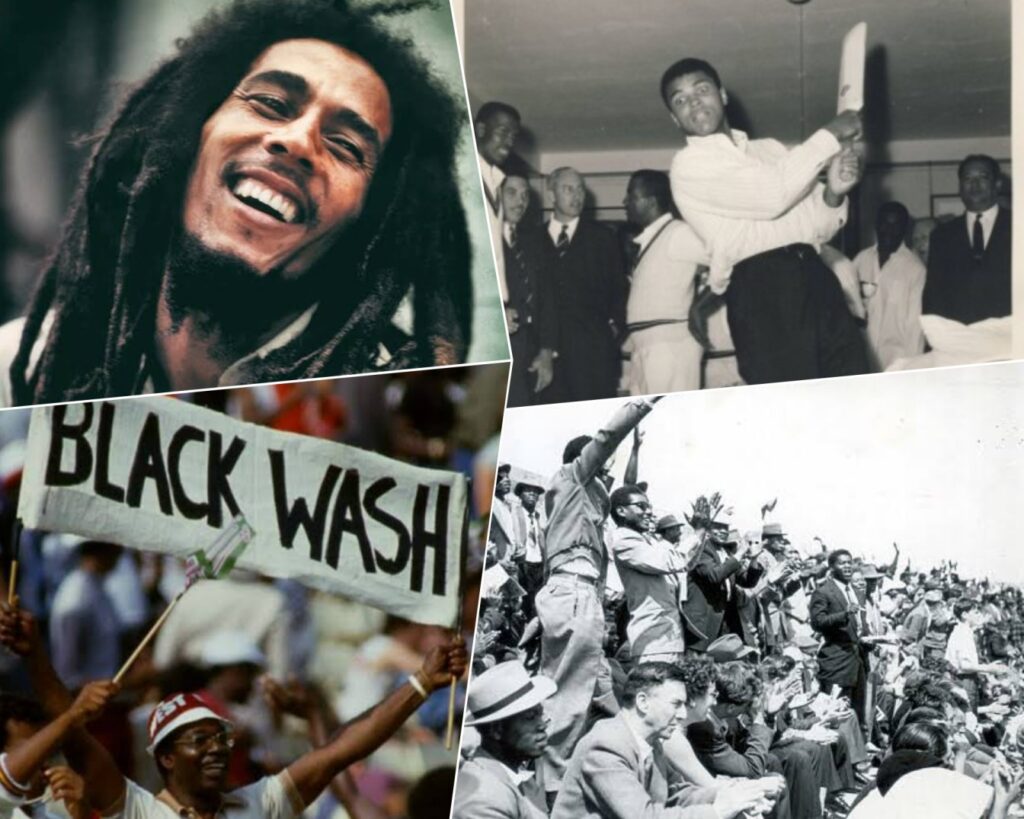
Bob Marley was one of them who was impressed with the West Indies cricket and the significance it brought for the region. The Jamaican singer popularised reggae music. He was one of the proud sons of the Caribbean. Bob wasn’t someone who just made songs about social injustice, he also practiced social justice. He was also seen as a revolutionary figure.
Present Day
Not all Caribbean islands have come out of colonial rule. Anguilla, the British Virgin Islands, the Cayman Islands, Montserrat, Bermuda and the Turks and Caicos Islands are British Overseas Territories. Apart from the British, the USA, France, Netherlands, Colombia and Venezuela still hold terotteries in the Caribbean islands. Caribbean islands consist of 13 independent nations and 17 territories.
The Caribbean islands heavily relies on tourism, but some Caribbean Nations export raw material and manufactured goods also. The Caribbeans population is very diverse in their ethnicity.
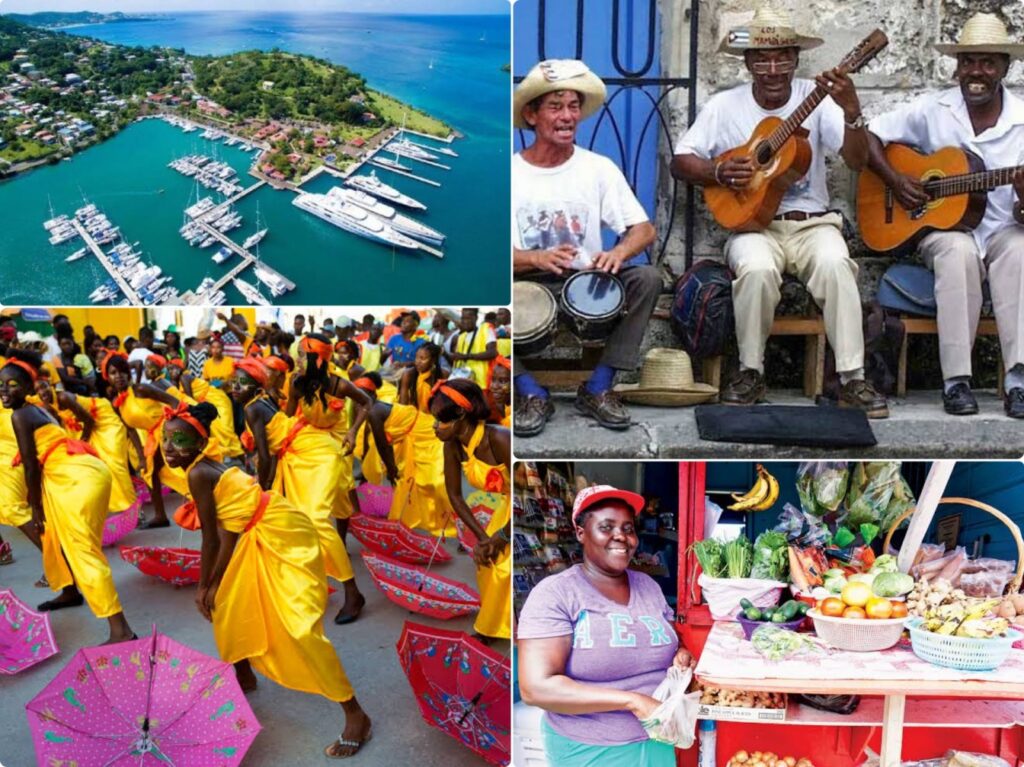
The region has become a mixture of African descent, Europeans, Indians and a few indigenous ones. The people of the West Indies are very carefree in nature, very jovial, enjoying the present, not worrying about the future.
Caribbeans have a very laid back attitude. It’s also a place of different languages, cuisine, music, and customs. Its culture has become a beautiful blend of different socio cultures. Its diversity and variety gives the region a unique identity.
Fortunately or unfortunately this all started when Cris Columbus set out to find a sea route to India. He lost its way, only to mistakenly stumble on to the Caribbean islands. But in all the conflict between the blacks and whites the identity of the indigenous caribbeans has lost somewhere.

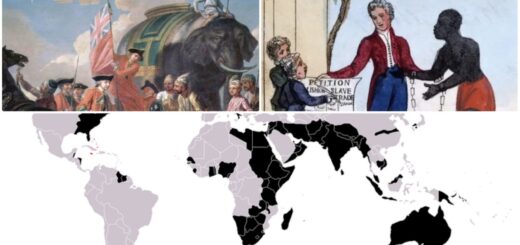
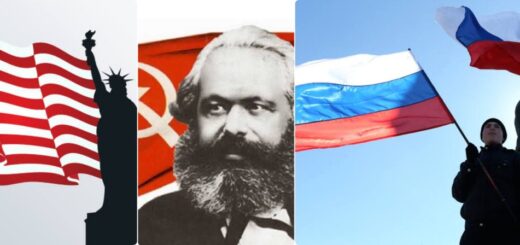










Recent Comments